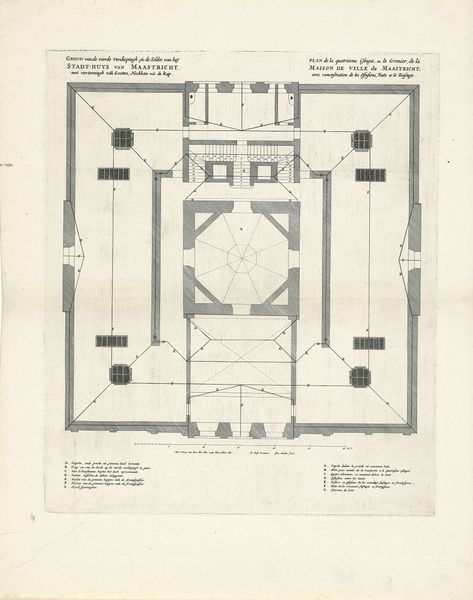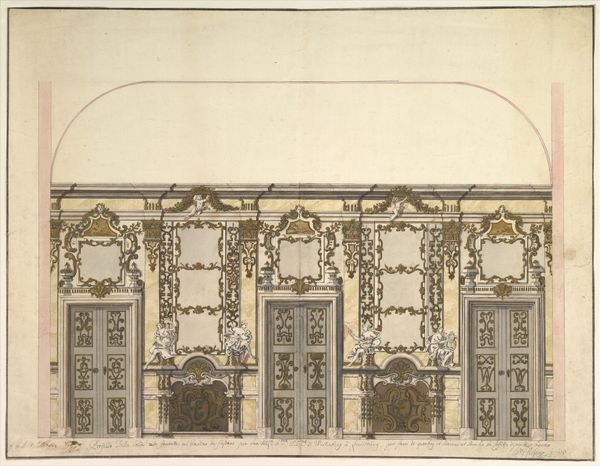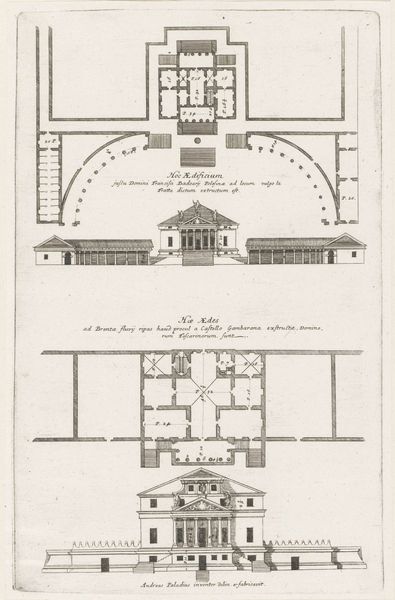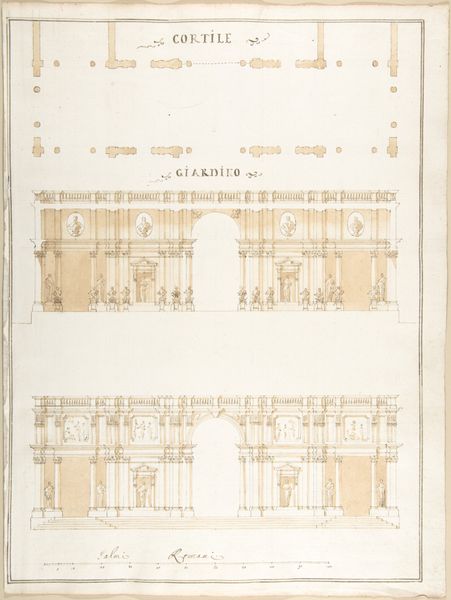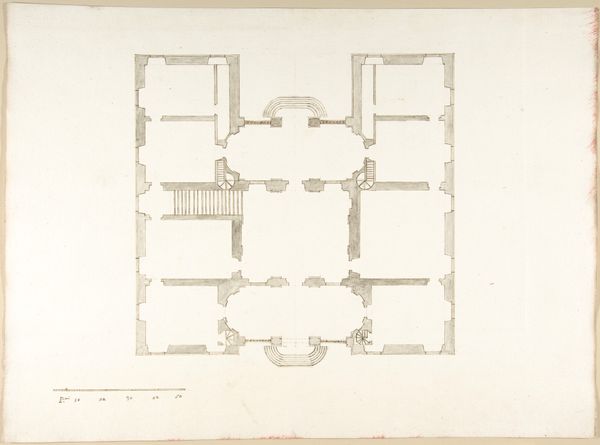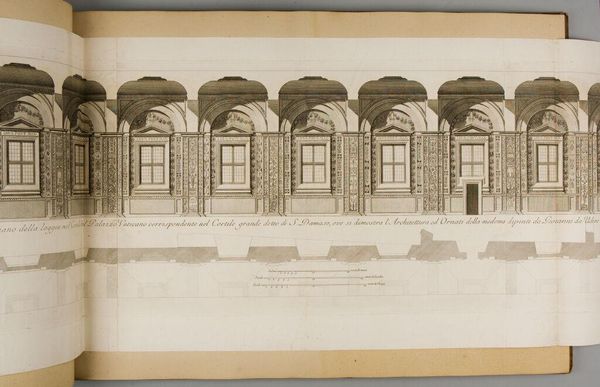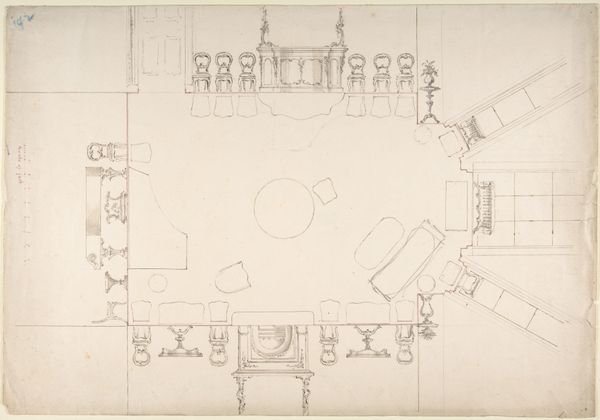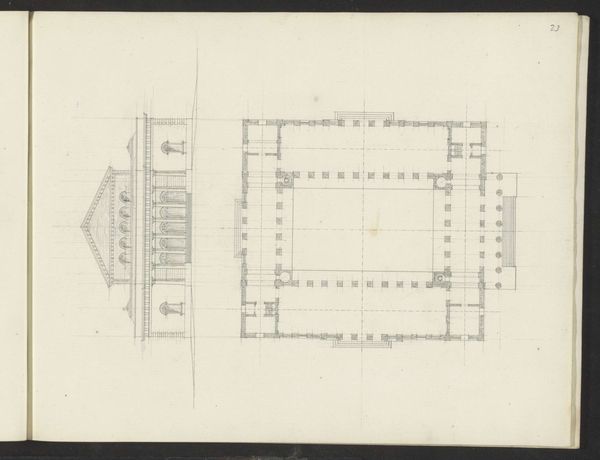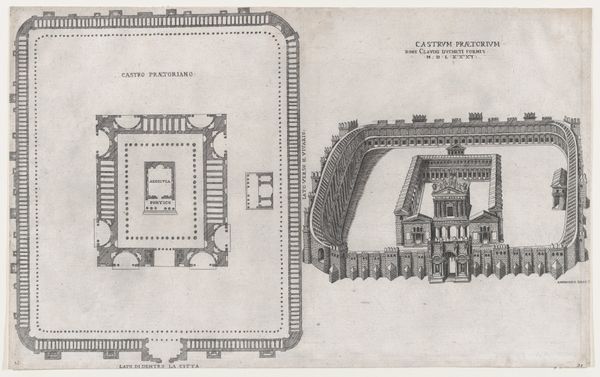
Façade et plan de l'Amirauté dans le jardin à Tsárskoye Selò... 1760 - 1850
0:00
0:00
drawing, print, engraving, architecture
#
drawing
# print
#
landscape
#
engraving
#
architecture
Dimensions: sheet: 21 9/16 x 29 1/8 in. (54.8 x 74 cm) plate: 19 5/16 x 26 11/16 in. (49 x 67.8 cm)
Copyright: Public Domain
Curator: Let's turn our attention to this engraving entitled “Facade et plan de l'Amirauté dans le jardin à Tsárskoie Selò…” It is attributed to Ivan Kuvakin and dates sometime between 1760 and 1850. Editor: It feels very rigid and almost…unreal? The symmetry is so exact. It's as if I'm looking at an architectural diagram rather than a representation of a place intended to be lived in and enjoyed. The stark lines create a severe atmosphere. Curator: The work depicts a facade and plan for the Admiralty building within the Tsarskoye Selo gardens, commissioned by Empress Elizabeth and later expanded by Catherine the Great. The gardens themselves were vital components of imperial power, reflecting enlightenment ideals of order and control. This engraving likely served to circulate those ideals and the Tsar's cultivated image to a wider audience. Editor: The use of line is striking. It feels precise, cold even. Note how it emphasizes the symmetrical layout with these evenly spaced ornamental pools—circular voids disrupt any softening the manicured greenery might provide. The very limited tonal range further amplifies this effect; it’s almost bleached. What symbolic meaning do you extract from this formality? Curator: Precisely. This intense formal structure spoke directly to Catherine's project of rationalizing and Westernizing Russia. The controlled landscape echoed her desire to impose order on the vast, and often unwieldy, Russian empire. Also, such projects created employment in a burgeoning urbanized setting as well as further elevating the image of Imperial Majesty. Editor: That makes me consider the perspective used here. We get both a flattened elevation of the facade alongside bird’s eye architectural plans, so you cannot have a fully immersive perspectival experience; one is forced into an almost omniscient position that implies a form of domination. This is not so much an invitation as it is an announcement. Curator: Yes, one might consider it propaganda! It demonstrates the extent to which artistic expression served broader political ambitions within the context of 18th century Russia. Engravings, accessible in format, played a pivotal role in shaping public opinion. Editor: Absolutely, analyzing its aesthetic rigidity shows the underlying message: this image's formal precision acts as a testament to imperial ambition; while a document of a real space it still is a perfect vehicle to broadcast authority. Thank you, this perspective enhances my reading of it entirely!
Comments
No comments
Be the first to comment and join the conversation on the ultimate creative platform.


